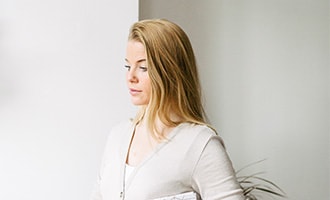Top Colors That Can Ease Anxiety and Depression: The Ultimate Guide — Dealing with anxiety and depression is no easy task, but integrating specific colors into your environment can offer a calming and mood-boosting ambiance. Color has an undeniable effect on our emotional state, and gaining an understanding of this impact can help us utilize colors to lessen the symptoms of anxiety and depression.
The Emotional Influence of Colors
Colors can trigger distinct emotional responses and affect our overall mood. Various shades and hues can stir up feelings ranging from peace and serenity to joy and exhilaration. With this knowledge at our disposal, we can thoughtfully choose colors that foster emotional wellness.
Understanding Anxiety and Depression
Before we delve into the colors that can alleviate anxiety and depression, it’s crucial to grasp the basics of these conditions. Anxiety is marked by overwhelming fear and worry, while depression is characterized by enduring feelings of sadness and a general low mood. Both conditions significantly affect one’s life quality and necessitate proper treatment. Now, let’s explore the colors that can help with anxiety and depression.
- Peaceful Blue
Blue is often linked to peace and tranquility. It has a calming effect on the mind and body, making it an ideal color choice for encouraging relaxation and lessening anxiety. Light blues, like sky blue or baby blue, can establish a serene atmosphere in bedrooms, living areas, or meditation spaces. - Refreshing Green
Research indicates that green can be instrumental in lessening depression. As the color of nature, green is known for its calming, rejuvenating effects and is typically linked to growth, harmony, and balance. By introducing shades of green, like sage or mint, into your surroundings, you can lessen anxiety and foster a sense of peace. Adding plants or creating an indoor garden can further enhance the calming properties of green. - Calm Inducing Purple
Purple symbolizes spirituality and introspection, combining the calming essence of blue with the introspective character of red. Shades of purple, like lavender or lilac, foster a serene and tranquil environment, easing anxiety and encouraging relaxation. Try adding purple elements, such as decorative pillows or pieces of art, into your living space to reap its calming benefits. - Energizing Yellow
Yellow is often associated with happiness, optimism, and energy. It can bolster the mood and stir up feelings of joy and positivity. Introducing elements of yellow, like decorative items or accent walls, can add vibrancy to your surroundings and help mitigate depression. However, be mindful to use yellow sparingly as too much exposure to bright yellows may overstimulate. - Invigorating Orange
Orange, a warm and energy-infused color, can stir up feelings of vitality and enthusiasm. It stimulates creativity and fosters a sense of motivation. Integrating orange accents, such as cushions or artwork, can bring an energy boost to your space and lift your spirits. However, like yellow, it’s best to use orange in moderation to avoid overwhelming the environment. - Dynamic Red
Red, a bold and potent color, can trigger intense emotions. It’s linked to passion, strength, and energy. While red might not be suitable for large spaces, using it strategically in small doses can invigorate energy levels and create a sense of excitement. Consider using red as an accent color through accessories or artwork to boost motivation and fight off feelings of sluggishness. - Grounding Neutrals
Neutral tones, such as beige, taupe, or soft brown, can establish a sense of grounding and stability. These colors offer a calming effect while preserving a warm and welcoming atmosphere. Incorporating earthy neutrals into your living space can promote balance and ease symptoms of anxiety and depression. - Relaxing Pastels
Pastel colors, like pale pink, light blue, or soft lavender, have a gentle and soothing effect on the mind and body. They can create a serene and tranquil ambiance, making them ideal for bedrooms or relaxation spaces. Using pastel-colored bedding, curtains, or wall paint can help establish a peaceful environment that fosters emotional well-being. - Balanced Color Combinations
Thoughtfully combining different colors can create a balanced and harmonious environment. For example, pairing the calming blue with the energizing yellow can strike a balance between relaxation and energy. Similarly, blending the serene green with the tranquil purple can establish a calming yet introspective ambiance. Experiment with different color combinations to find the perfect balance for your space.
Additional Ways to Alleviate Anxiety and Depression
Creating a Colorful Environment
Home Décor — When introducing colors into your home, consider using them in various aspects of your decor. Choose paint colors, furniture, and accessories that align with the emotional atmosphere you aim to create. Be mindful about the colors you choose for different rooms, considering their intended use and the emotions you wish to evoke. For instance, calming blues and greens can work well in bedrooms and relaxation spaces, while vibrant yellows and oranges can energize social areas like the living room or kitchen.
Workplace Considerations — Colors can play a significant role increating a conducive work environment. A calming blue or green can reduce stress, while small pops of energizing yellow or red can stimulate creativity and focus.
Clothing Choices — The colors you wear can also impact your mood. Dressing in colors that uplift your spirits or calm your mind can serve as an additional tool in managing anxiety and depression.
While colors can contribute to a healthier emotional atmosphere, it’s essential to remember that they are part of a larger toolkit. Professional help, therapy, medication, regular exercise, a balanced diet, adequate sleep, and a strong support system are all crucial components in managing anxiety and depression.
If you or someone you know is struggling with these conditions, reach out to a mental health professional. They can provide the necessary guidance, strategies, and resources to deal with anxiety and depression effectively. Remember, seeking help is a sign of strength, not weakness.
In conclusion, colors can play a significant role in easing the symptoms of anxiety and depression. By understanding the emotional influence of colors and strategically incorporating them into our environment, we can foster a more balanced and harmonious emotional state. However, it’s important to remember that everyone’s reaction to colors can vary based on personal experiences, cultural context, and individual preferences. Therefore, it’s essential to experiment and find the color combinations that work best for you.
Embrace the power of color and brighten up your world, one shade at a time.






Thank you, It seems I really needed to read this.
I am probably going to have to end up reading it a few times along the way to get it to sink in and act on it, but it resonated with me in such a profound way that I just had to say thank you.